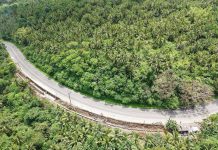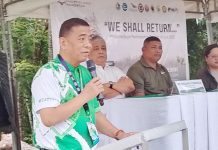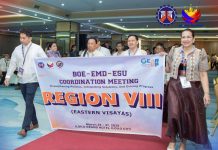TACLOBAN CITY- The members of the Leyte Chamber of Commerce and Industry (LCCI) has submitted a copy of their proposal to Presidential Assistant for the Visayas Michael Lloyd Dino listing down priority areas considered as key for the region’s development. The proposal was personally given to Dino by Oliver Cam, an official of the LCCI during a gathering attended by President Rodrigo Duterte’s point man for the Visayas last July 29 here in the city.
LCCI, in particular, identified three priority areas which include the expansion of the Leyte Industrial Development Estate (LIDE); pushing for the establishment of an economic zone in the northern part of Tacloban city and support to tourism sector. On the expansion of LIDE, the chamber hopes to bring in more inclusive types of industry. “Right now the existing industry there is the copper smelting plant which their effect on the area is not inclusive simply because they import everything they export it all out,” Cam said.
Although the smelting plant has good impact to labor and its surrounding areas, what the chamber wants is to convince more industries to come in and establish operation in LIDE to generate more jobs not only for Leyte residents but also for those coming from Samar. LIDE is a 425 hectare special economic zone located in Isabel, Leyte, which was established in 1978 thru Letter of Instruction 962. It is the home of two major industries: Philippine Associated Smelting and Refining Corp and the Philippine Phosphate Fertilizer Corp. The establishment of economic zone in the northern part of Tacloban is a long term solution that will provide great impact to more than 80,000 residents in the area. The northern part of the city, consisting of 18 barangays, has been declared as the new township of this city where families that were displaced by supertyphoon “Yolanda” and those that are living along danger zones were relocated.
The government thru National Housing Authority together with private donors is constructing 16,000 housing units in the said area. “The absence of livelihood is one of the challenges why it is hard to move these people to that area. There is no job in the north but only housing. If you are moving people you should not only focus on housing but on holistic approach. That is why we are really pushing for the establishments of economic zone in that area,” Cam said. Electricity and water supply also hampers the relocation of displaced families to the northern barangay, added Cam. The LCCI is also pushing for support on tourism industry of the region that was able to recover immediately after the devastation of Yolanda in November 8, 2013 and contributed a lot to the regional economy.
“The problem right now is the funding for the proposed major tourism rehabilitation program that was proposed by the regional office of Department of Tourism that until now almost three years after the typhoon are not yet funded,” said Cam. DOT-8 reported that the region has experienced a resurgence in the tourism sector after the devastation of Yolanda. From 731,000 in 2013, tourist arrivals in 2014 reached 964,000 or a 31.9% increase. Last year, 1.099 million tourists visited the region resulting to a P 9.4 billion tourist receipts. “That is why we are really struggling with our tourism effort because our office of tourism here is not given the budget. They just become creative in trying to address the needs of our tourism industry here in the region,” he added. (ROEL T. AMAZONA)



